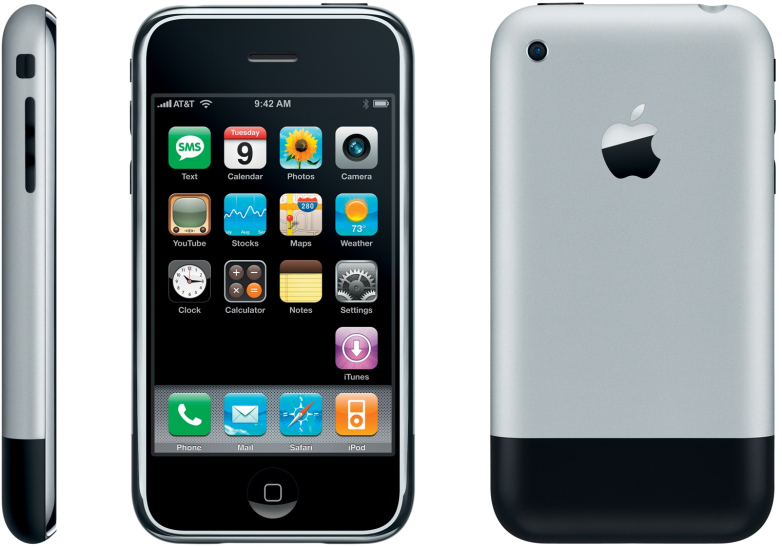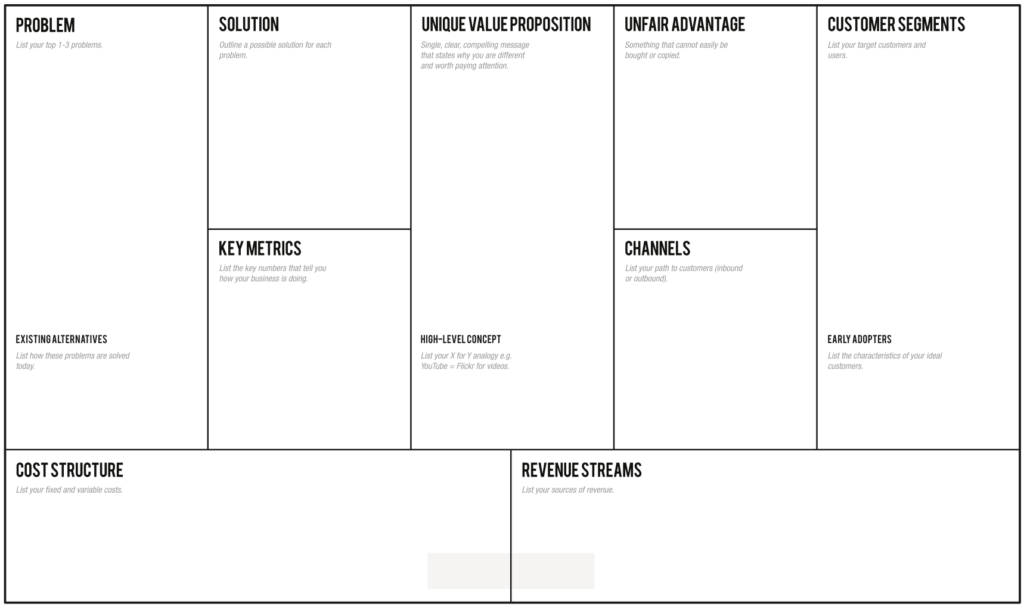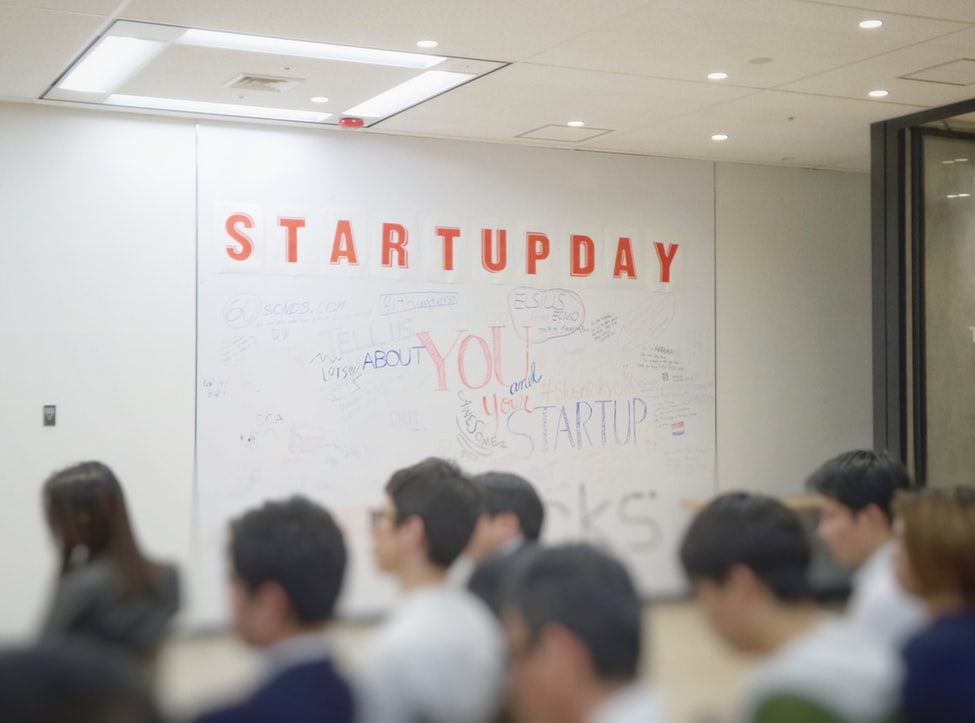Don’t let these ideas pass by you by like a ship in the night: How to use Identification, Vision, and Motivation to follow your Big Idea dreams
If you were asked to evaluate a newly built app by walking around a city or a school campus and taking pictures of buildings, hit a submit button, and some server up in the cloud somewhere would almost instantly beam down a description and other information about the edifice in front of you, would this tech be surprising? Would it seem magical? Right now, today, we are at the precipice of an augmented world. There are already people taking this initial concept of image recognition and not only pushing back information but actual digitally overlaid figures that you can interact with in that blend of reality and virtual interfaces overlaid on top of one another on some device. The potential applications for this technology are huge.

Thinking about new technology, have you ever taken a moment to think through missed professional opportunities in your life? Not personal opportunities – this isn’t a reflection on how if you had just dodged right instead of left you would have scored a touchdown in the big game instead of being tackled or if you have just said ‘i’ instead of ‘e’ you would have gone on to win that regional spelling bee. This is a reflection back on the moments and ideas in your career that if you had realized what you had in front of you then it would be you up on stage leading the big social media company or presenting at E3 explaining the next big VR headset. You know, that one idea that wouldn’t just be your MDI (Million Dollar Idea) but would end up being a Billion Dollar Idea?
Would you believe me if I told you that I experienced the big tech idea in 2001 and it wasn’t until many years later realized and acknowledge the giant missed opportunity that it presented?
Back in 2001 I was in college attending what would turn out to be one the most influential courses that I would take. This was a course in mobile software engineering. In order to understand what that actually meant at the time first we need to recap what the tech world looked like in 2001. That was the year that Windows XP was released. Bittorrent was launched. The September 11 attacks occurred and we only have a handful of actual footage from those horrific events because highly advanced cameras weren’t sitting in the pocket of everyone walking down the street. Wikipedia was launched. The first iPod was launched that year. Smartphones didn’t exist at the time. The Motorola Razr wouldn’t even come out for 3 more years, the first iPhone for 6 more years. It wasn’t even until early 2002 that the first tablet PC was launched by Microsoft after being designed and built by HP.

*Queue dramatic music* I had one of those tablet PCs. It seems so passé now, but at the time desktops still ruled the earth and the laptops that existed were giant monstrosities. I remember buying my first laptop, with my parent’s money, for college. It had a 15″ screen and was nearly two inches thick and probably weighed nine pounds. It was a monster. Nobody brought computers to class at the time. I remember feeling very weird as I would whip out my Microsoft Tablet PC in class and start typing away to take notes. It was very loud and noticeable to the point that I stopped using it for notes altogether.
The reason one of these tablets was in my possession was that I happened to be one of the lucky few taking a mobile computing class with a well connected professor who requisitioned both a brand new tablet and a Pocket PC for every student in the class. You might recognize Pocket PCs by a more common name, a PDA. HP made these as well and at the time they came with the latest and greatest, Pocket PC 2000 running Windows CE 3.0 which were the first units to run a mobile version of Microsoft Office. There is nothing better than being a poor college student and getting to play with the latest and greatest tech that is just hitting the market.
So of course, the course was structured around these devices and what they could do. For the group I was in, the main project was centered around building something using these devices. It just so happened that this professor also ran the software imaging lab and from discussions with him we had the bright idea to build an accessibility app that would leverage tech around image recognition. For this we were planning to use the Pocket PC or tablet to take a picture of a building on campus, transit that image back to a server somewhere, run image processing on the image, identify the image against a database, and then provide information about that building back to the client app. In 2001.
While we never had the time to put polish on the solution, it did work. In 2001.

I have owned/carried 2 iPhones in my life. I purchased (and still have) an original iPhone from 2007 and an iPhone 7 for work years later. That original iPhone was a game changer. The sheer audacity of the phone still blows me away. If you are younger and don’t really realize what it was like to not have a smartphone to answer any question or to listen to any song or to view any map, well the world was a totally different place back then. That original iPhone was a momentous device. It opened the doors for so many ideas, apps, and social change. Yet, the first three apps that I remember getting excited about were an app simulating a glass of water or beer (can’t remember which) that when you tipped the phone the liquid would ‘pour’ out. A flashlight app that would light up your screen with a solid white background and would amp up the brightness to the highest level possible. The third was a fart app. The pinnacle of personal technology to this point in human existence and we all ran around lighting our way pouring fake liquid from our phones and simulating fart noises. Ha! And they say that we are at the top of the food chain…
Seriously though, while people immediately jumped in and started building cloud connected apps, the first app stores only contained dozens to hundreds of apps and most of them were incredibly simple compared to the breadth of functionality available today in 2019. According to wikipedia (WPC Score: 10), while the term cloud computing was first mentioned in an internal document from Compaq in 1996, it wasn’t popularized in general societal terminology until 2006 when Amazon released its ‘Elastic Compute Cloud’ in 2006. That was only a year or so before the first iPhone was released.
Looking back at these events now, the hindsight is both blindingly obvious and somewhat frustrating. Focusing on mobile development and then being able to transition those skills into smartphone development in order to hit the ground running in 2007 would have been an amazing and wild ride. Who knows where it would have led. The tech that I was working with in 2001 seems orders of magnitude more complex than the simple apps that I remember getting excited about. What could I have made and been a part of if I had continued to explore that area of technology? Where would that put me professionally right now? Even if I had continued down that path and reverted, technologically-speaking, back to simpler apps, at one point in 2008 the “iPhone fart app pulls in nearly $10,000 a day” (from an article by the same name here).
“If wishes were horses then beggars would ride” is a quote that I remember hearing at home often while growing up. There is also no use crying over spilled milk. The fact of the matter is, wide open big opportunities are all around us every day and we routinely miss them each and every day. We all have thoughts and dreams. We all have random shower thoughts. The gap to be bridged here is whether or not each of us can first envision how that one big idea would grow into a viable business and then find the motivation to take the first steps down that path and start doing something about it.
Whether it is money or fame, for a sense of passion or a sense of duty everyone that leverages their ambition and pursues these ideas feels the motivation to do so. Therefore, from these statements and the story above we have isolated three key elements that are required for going all carpe diem on a Big Idea: Identification, Vision, and Motivation.

The Identification of a Big Idea
How does one identify a Big Idea? Obviously, 18 years ago I did not have any clue how to achieve this objective. To be honest, it is not currently clear if I would have the accumulated wisdom at this point in my career to recognize a potential Big Idea. However, if wisdom is the accumulated body of knowledge that one builds up over time I am theoretically wiser while writing this than I have ever been at any point in my life. Therefore, while I can’t confidently depend on this wisdom to assist in identifying a Big Idea, I can confidently leverage it in an to attempt to understand how one would go about building a process of identification.
To begin, wisdom dictates that the first step is to define what constitutes a Big Idea.
An idea is “big” if it helps us make sense of lots of confusing experiences and seemingly isolated facts. It’s like the picture that connects the dots or a simple rule of thumb in a complex field… A big idea is thus a way of seeing better and working smarter, not just a vague notion or another piece of knowledge… If an idea is “big” it helps us make sense of things. So, an idea is not “big” merely because it categorizes a lot of content.
Grant Wiggins from the article “What is a Big Idea?“
Next, wisdom says we boil this definition down into even simpler terms in our own words with a new piece at the end because we aren’t focusing on philosophy here, technological Big Ideas mean products. Therefore: A Big Idea provides simple understanding of a confusing experience with a smarter way of doing things that makes sense in a new product that hasn’t been made before.
Sounds good, so let’s apply it to the project that I worked on back in 2001. Our use case was something like this: A freshman is trying to navigate around campus and is lost trying to find the building for their next class. With this app they can get information about each building that they are looking at and possibly even calendar schedules with class numbers and directions to individual classrooms. So does this pass the simplified Big Idea definition?
- simple understanding of a confusing experience: A lost freshman doesn’t know which building is which yet, so a way to identify what building they are facing hopefully simplifies their confusion. The confusion box is definitely checked here
- a smarter way of doing things: remember there were no smartphones in 2001, so the only recourse here was to use a paper map or go in each building and ask someone. Having an ability to complete these tasks in the moment without having to interrupt others seems like a smarter way of achieving that goal
- new product that hasn’t been made before: to the best of my knowledge I was not aware of any products like this that were readily available at the time. So, check!
Now this is only one way to identify a Big Idea, so in order to be thorough let’s run the project past another definition. While researching this story I read an interesting post by Cheo on Medium titled “How to tell when you have a big idea“. In this article he discusses advertising legend David Ogilvy who states:
…recognizing a big idea is “horribly difficult” (he admits to having at most twenty over his own distinguished career as a copywriter), but he recommends asking yourself the following five questions to increase your odds of success:
Cheo in the article How to tell when you have a big idea
1. Did it make you gasp when you first saw it?
2. Do you wish you had thought of it yourself?
3. Is it unique?
4. Does it fit the strategy to perfection?
5. Could it be used for 30 years?
Does the project pass Mr. Ogilvy’s 5 question Big Idea test?
- Did it make you gasp? The first time the app worked as intended it sure did. Not sure if this was from awe at the concept or joy at a successful test, but it sure felt impressive at the time
- Do you wish you had thought of it yourself? I claim at least partial credit for the project idea. We were on a team so I believe that it is fair to share the credit equally
- Is it unique? as previously stated, at the time it appeared to be wholly unique
- Does it fit the strategy to perfection? The strategy of getting a passing grade? Definitely. The strategy of building a mobile application platform that would be primed for the release of a product like the original iPhone? That thought definitely did not occur to me at the time, but now I can see how that would have been possible, so a mostly qualified yes here
- Could it be used for 30 years? Considering that even Google has made an app to identify what a camera is looking at (Google Lens) the idea definitely would have been viable for 20 years and most likely through the full 30
With both of these ideas showing that the original project is potentially a Big Idea, let’s try and consolidate the test down into a single focused statement:
A Big Idea provides simple understanding of a confusing experience in a way that has a wow factor with a smarter, unique way of doing things that makes sense in a new product that hasn’t been made before that people would find useful over the next 20 years.
Kevin Wanke
Now that we have a full definition and method for determination of a Big Idea I still cannot say with confidence that I would recognize one in front of me. There is also an argument to be made that the further along one gets in a career, even though the accumulated wisdom theoretically is higher than it has ever been, the tolerance for the risk associated with chasing a Big Idea on average also lowers over time. That is a big balancing factor when evaluating ideas and could even lead to some unconscious limits against the ability to adequately explore an idea to the point that the vision for what the idea could achieve is thoroughly conceptualized.
In the end, I believe that there are only two real ways to know if an idea is a Big Idea. The first is to do what I am doing here and look back in a few years with the newly accumulated wisdom and evaluate then if it might have passed the test. The second is to throw caution to the wind and take a dive into the deep end and start creating a Vision around the Big Idea.

A Vision To Turn A Big Idea Into A Big Business
At this point most humans are familiar with the story of garage startups. Hewlitt Packard, Disney, Amazon, Google, Apple, and Microsoft are all examples of Big Ideas that started in a garage and grew to massive, world-spanning business both in terms of products, money and ideas. This may be the new America dream for anyone daydreaming about Big Ideas. Whether it is luck, chance, or some incredibly skillful people, these are the biggest and brightest examples of Big Ideas gone supernova.
These examples also don’t provide a good template to follow to turn a Big idea into a Big Business. If one needs to wear a creative inventor hat to come up with a Big Idea, then that hat needs to be swapped out with an Entrepreneur hat to turn that idea into a Big Business. Business concepts, business plans, SWOT analysis, strategic planning and many other buzzwords fill the articles around this topic. In fact, I would even make an educated guess that pretty much none of the famous garage startups included lots of business planning and entrepreneurial discussions when they were hacking away at their Big Ideas inside cluttered and dusty garages. However, wearing an entrepreneur hat does not mean that you need to start spouting the latest business buzzwords and run around trying to create the next Spotify Model for development.
There is actually modern day philosophy for embracing being an entrepreneur and attacking building something that can bootstrap your Big Idea into an actual business. Lean Startup is a methodology that borrows from lean manufacturing science and applies it against development of new products in a startup atmosphere. The practice focuses on value-creating functions during the earliest phases of a company “so that the company can have a better chance of success without requiring large amounts of outside funding, elaborate business plans, or a perfect product” (wikipedia, Lean Startup).
There are vast amounts of information on the web about this methodology and one of the foremost evangelists of the system is Eric Reis who has written about the core principles of the movement in The Lean Startup (Amazon link). These principles are not focused on business plans, but instead on wearing the Entrepreneur hat and working to determine who the correct audience is that will pay for the Big Idea through building Minimum Viable Products (MVPs), A/B testing, and collecting actionable metrics so that pivots can be made to better bring the assembled product in alignment with the ideal customer and create a business from a Big Ideal with greater efficiency and thus the need for less money. This is encapsulated in the idea of a Build-Measure-Learn feedback loop where this feedback loop is used to iterate the product quickly based on immediate feedback with the goal of making this loop as tight and efficient as possible. This methodology has been paired with simplified business planning and targets uncomplicated business planning as shown in the Lean Canvas below.

The Lean Canvas is just one of many simplified business planning means to help move things along. There are many other viable business model templates that could apply here. The main goal that should not be forgotten is that at the end of the day startups aren’t focused on the business side of things. Startups are build around Big Ideas which at the beginning are really nothing more than big guesses. Lean Startup attempts to turn these hypothesis into paying customers as quickly, efficiently, and at the lowest cost possible. While this methodology is not the only wait to turn a Big Idea into a Big Business, it is one of the more popular concepts in practice today in 2019.
While some adherents claim that the lean process can make individual start-ups more successful, I believe that claim is too grandiose. Success is predicated on too many factors for one methodology to guarantee that any single start-up will be a winner. But on the basis of what I’ve seen at hundreds of start-ups, at programs that teach lean principles, and at established companies that practice them, I can make a more important claim: Using lean methods across a portfolio of start-ups will result in fewer failures than using traditional methods.
Steve Blank from the article Why The Lean Start-Up Changes Everything
No matter the method to get there, the Vision for a Big Idea requires creation of a product in some form or fashion as well as a dependency on getting that product in front of people who might eventually give you money for that product. In this vein, the Vision is a business function. You don’t need to be great at business to be successful here – a lot of the famous garage startups were much closer to Engineers than they were to business people with a MBA – but there isn’t a way to turn a product into money without putting some sort of structure around the product and we usually call this process building a business. However, there is one more critical element that is required to turn a Big Idea into a Big Business, and for this step we need to roll up our sleeves and take off the hats and grab a fresh tub of elbow grease because right now the element that is missing is Motivation.

Finding Motivation To Actually Execute On A Big Idea
The impetus to begin and then keep the ball rolling once started is one of the hardest challenges to overcome for a Big Idea. Coming up with a Big Idea is actually the easiest part of the whole thing. Building a Vision to support turning that into a Big Business is harder, but just getting off the couch and doing something is the hardest action to take. This key element is why so many people can talk about their big ideas but very few actually step up and do anything about them. While timing, circumstance, opportunity, and luck all play a part, the real fuel that drives a startup is the passion, drive, and motivation of the person or people grinding and fighting every day to make that dream a reality.
Being an entrepreneur and running your own business is one of the hardest things you can do. It will tax every fiber of your patience, your finances, your family, your health and even your sanity.
Patrick Mork from the article: The Art of StartUp Motivation
It would be really easy at this point to throw a couple of motivational links and some perseverance quotes up here and call it a day. I am reminded of Dori from Finding Nemo. Just keep swimming is her mantra. This would be great advice if this was a straight and narrow path and no matter if the path went uphill or down, it just kept going on in front of you and the main think to remember is to keep going no matter the grind needed to continue. This scenario implies that the path is leading somewhere.

I am very sorry to burst this bubble, but the issue here is not the belief that the path leads somewhere. The reality is that there is no path.
Have you ever driven cross country? If you ever get a chance to just drive for hours just watch out the window while driving at the landscape around the vehicle, the geographical area doesn’t matter. Take a moment and consider how you would traverse all of that distance if there were no roads, no paths showing you the way. Are there hills or mountains in the way? Are there streams or lakes or rivers to navigate over or around? Are you crossing bridges that in a few seconds get you over ravines or gorges that would take hours to climb down and then back up the other side? This is a much better scenario to describe a start up. Even if you are lucky enough to have a piece of paper with a map on it at best you might have some landmarks to follow from that map. But still, there is no path. This is why people following the Lean Startup methodologies have more tools at their disposal. These are the people that come prepared with not only a map, but things like a compass. Yet still many of these people fail.
The article referenced above, The Art of StartUp Motivation, calls out lots of ways to keep the momentum going once things have started moving. Finding Purpose. Stick to a routine. Get enough sleep. Watch motivational videos. These are all good tips and it is a good article, but these are all habits and skills that help keep the fires going. There is nothing here explaining how to start that fire in your gut to get things moving. There is nothing describing how to get some of the passion needed to convince others that your Vision is the right one. This is a deeply personal effort and it will be different for each person. There is no common statement, method, or idea that I can put here that will light that fire in every person that reads these words.
However, once you figure out what drives you to take on the challenge of a Big Idea, you need solid habits and goals to keep things moving. While Apple is one of the classic garage startups, the company also shows how the drive of one individual can make or break a company. Steve Jobs and Steve Wozniak came together in 1976 to start Apple Computers. These two were the main drivers behind the early success for the company and led it until 1985 when they both ended up leaving what had turned from a Big Idea into a Big Business. The leadership in place kept going but over time started struggling and this resulted in Steve Jobs re-joining Apple in 1997 and leading the company into building that first iPhone that I used back in 2007 and through that to the worldwide behemoth of a company that it is today. Without Jobs and his Vision, the company struggled to continue to grow.

The point here is that the drive and vision from one person is hard to replicate and continue in other people. It takes that inner fire from the person with the Big Idea to turn the dream into a reality. It takes perseverance, determination, and lots and lots of motivation, especially when things get tough. The early explorers, trappers, and pioneers seized upon this motivation to travel out west and build up America. In the book by Peter Stark: Astoria: John Jacob Astor and Thomas Jefferson’s Lost Pacific Empire: A Story of Wealth, Ambition, and Survival (Amazon link) the author talks about the trappers traveling without a path or a map and often without food across the wilderness. They even tried to eat the leather from their boots to survive. In the book Lean Startup, Eric Reis talks a lot about making pivots early and often to better bring the MVP (Minimum Viable Product) better in line with customer expectations and needs based on validated learning techniques. If the trappers had pivoted then they might not have needed to try and eat their boots to survive, but then again they wouldn’t have had boatloads of furs to make them rich when they got back to civilization.
No matter what methodology, challenges, terrain, path (or lack thereof) you traverse when pursuing a Big Idea, your own motivation is key to finding success. It will not be easy and often will not be fun, but remember that you can’t find your own way to just keep swimming unless you first jump off the dock into the water.
As for me? I have zero regrets. If given the chance to go back to my college days I think I would turn it down. There is too much fun to be had in doing what I am currently doing building products and in the potential for a burgeoning writing hobby. Besides, there is no guarantee that if I went back I would be able to gain the wisdom that I have accumulated to be able to write these words and help others realize their own Big Ideas. That possibility provides more than enough fulfillment and satisfaction to obviate any desire I have to go back and do it all over again. Thanks for reading!




Comments are closed, but trackbacks and pingbacks are open.